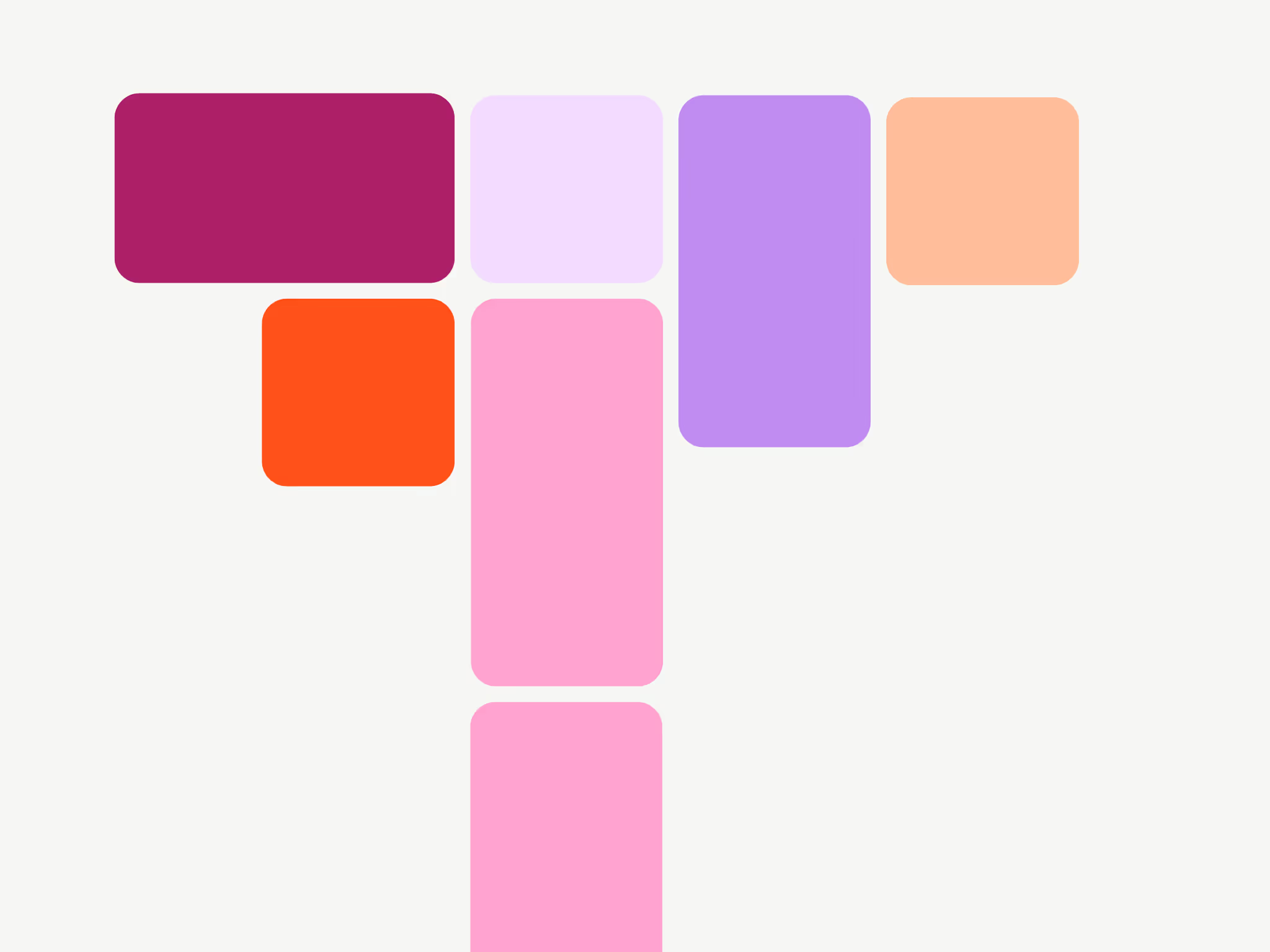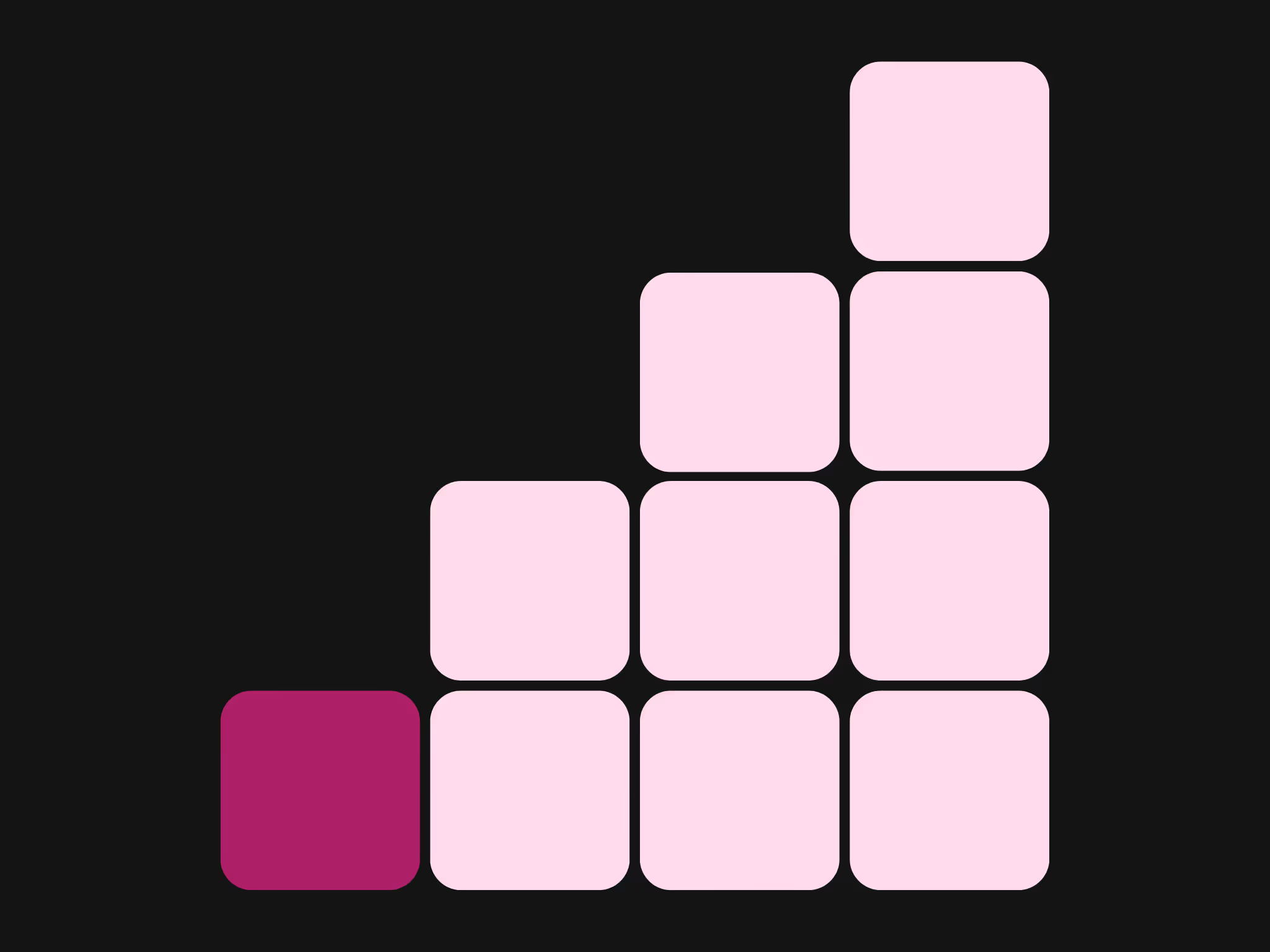Influencer search is a shadow of its former self. In the past, it was relatively straightforward to find a creator who fit your niche, spoke to your community, and made decent content. You could gift them one of your products or do a paid partnership without breaking the bank.
But today, that feels like a lot to ask for. For starters, you’ve got to filter and identify the right-match creators from a gazillion influencer profiles. Once you manage to find them, you learn they might be too expensive, tied to exclusivity by a competitor, or just too busy to partner with you. Ouch.
And that’s not all: with the saturation of influencers and influencer content, you’re now marketing in a “sea of sameness” – making it much harder to stand out and attract your ideal customers.
Amongst all this chaos, how are marketers finding the right influencers to partner with today? What old tactics should be thrown out, and which fresh strategies are on the rise? We asked these questions (and a lot more) to 56 influencer marketers. Here’s the state of influencer discovery in 2025.
Marketers are relying on socials & software to find creators
The two main ways marketers find creators are scrolling social media manually and using influencer discovery tools.

Note: It’s not one or the other – most marketers use more than one method to hunt for influencers.
In native social search, just over 66% of marketers reported relying on hashtags or keywords to find the right creators. The hashtags and keywords you should use depend on your niche, brand, campaign, and products. For example, if you sell skincare products, you might search for:
- skincare
- skincare routine
- nighttime skincare products
- etc.
You can also search for products you’re trying to promote. To continue our above example, you might search for “sunscreens for summer” or “pigmentation serums.”
If you’re looking for a certain type of influencer – like mom creators – or creators with specific credentials, you can search for those keywords or hashtags, too. For instance, if you’re looking for influencers who are dermatologists, you might search for hashtags such as #dermatologist or #dermtok.
Keywords and hashtags also make it easy to find niche creators. Influencers often highlight their content niche in their name field, making it easy for you to find them in search (just remember to use the Accounts tab instead of the Content one).
For example, I found Hannah Hargrove by searching for “baby nutrition” because those terms are included in her Instagram name.
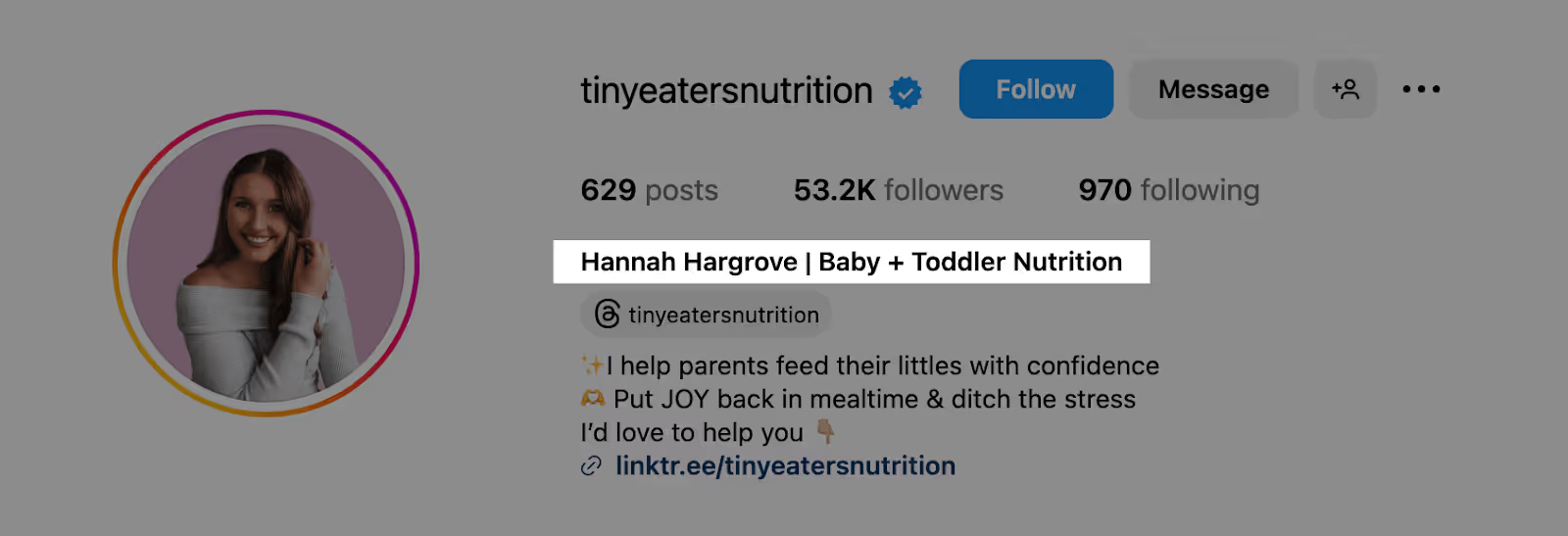
Apart from brand, product, or niche-related keywords and hashtags, you can also find influencers using:
- platform-specific hashtags (like #tiktokmademebuyit)
- content-specific hashtags (like #grwm or #vlog)
- location-specific hashtags (like #london or #newyork), especially for geo-targeted campaigns
The above hashtags and keywords are helpful when you’re open to finding various kinds of creators and aren’t afraid to venture outside your niche. To find influencers, Lee Drysdale even hunts for creators who make excellent trending content on TikTok:
🟧I always look on TikTok first – there's some super cool talent under the trending keywords and sounds.
To sum up, most marketers are using five main types of hashtags or keywords to manually search for influencers on social media:
- Niche-specific keywords/hashtags – such as skincare, fashion, or travel
- Category or product keywords/hashtags – such as skirts, earplugs, or makeup
- Credential-specific keywords/hashtags – such as nutritionist, food creator, or doctor
- Platform-specific keywords/hashtags – such as tiktokmademebuyit or booktok
- Content-specific keywords/hashtags – such as “get ready with me,” vlogs, or “day in my life”
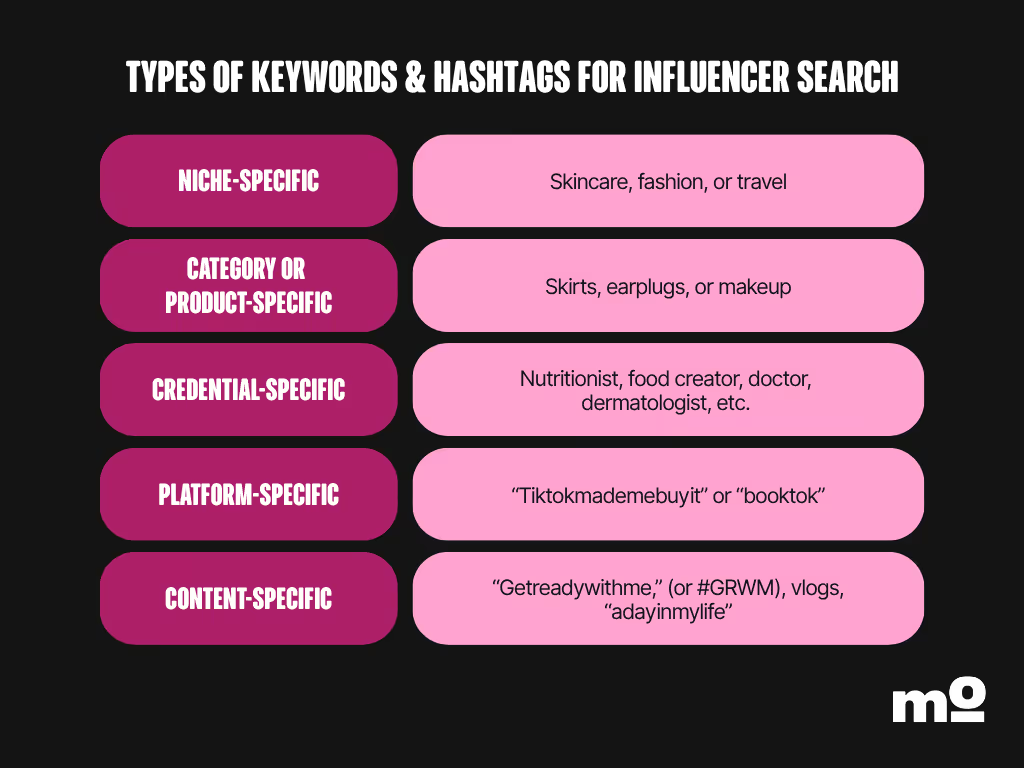
At Modash, we’ve found you can also expand your influencer pool by using keywords and hashtags related to storyfit influencers – creators who aren’t the obvious choice but who can tell your brand story authentically by weaving a context-driven narrative.
For example, when you think of Metabolic Meals – a food delivery service – you would assume their first choice is to partner with health influencers. And they do, but they also collaborate with mom influencers to show a different use case of their product to their target customers.
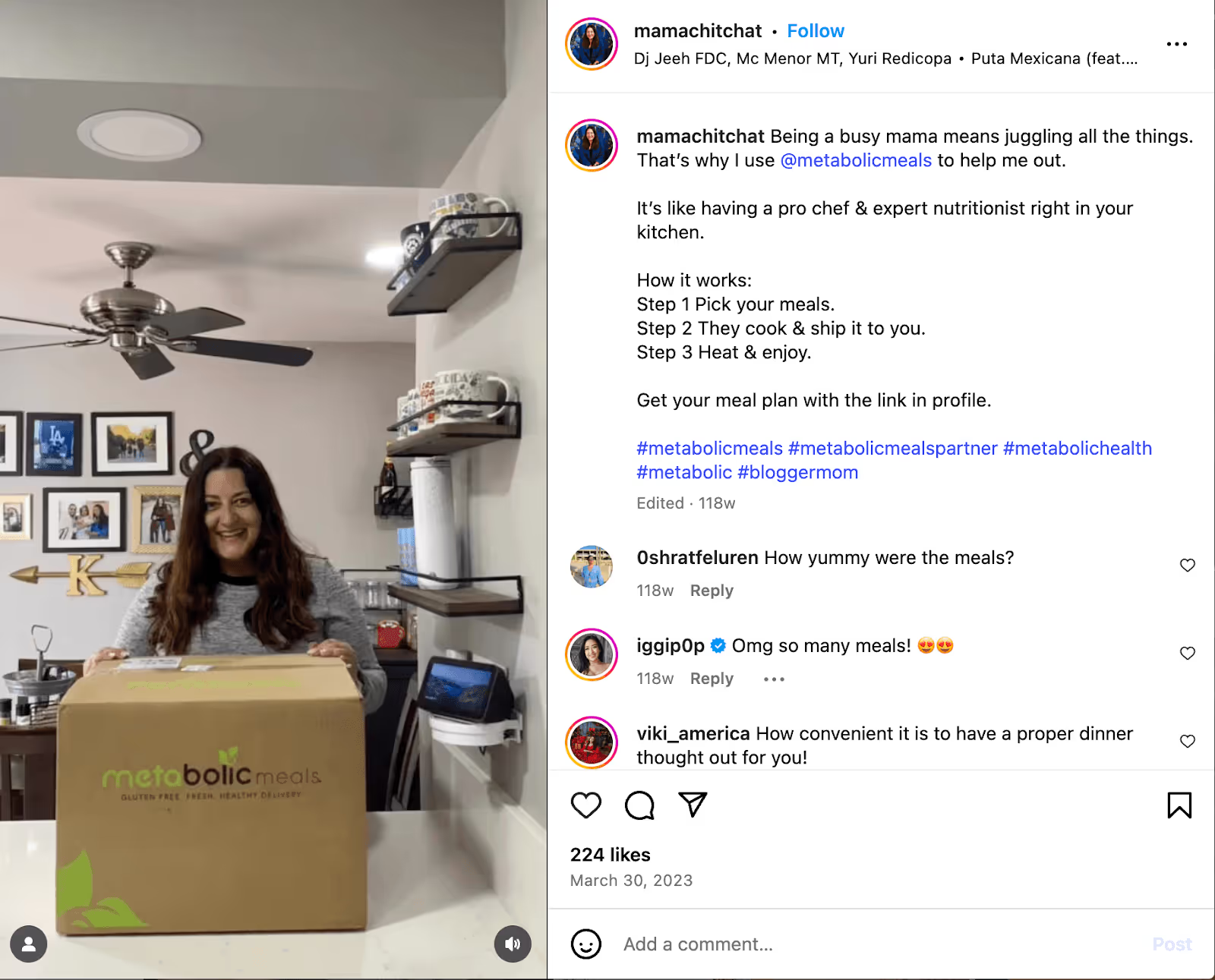
Later, I go deeper into storyfit influencers and how to find them. But first, I want to wrap up on manually searching for creators.
There are downsides to using social media scroll/search to find influencers:
- ⌛It’s time-consuming since you can’t filter for creators who match your vetting criteria – so you still need to ask creators for their audience metrics.
- 💸It’s a gamble because the influencers you like might not have the right audience demographics or be within your budget.
Which is why the savvy marketers we interviewed didn’t rely on keywords and hashtags alone – they also used an influencer discovery tool. Hear it from Victor Wiśniowski:
🟧You save time (and ultimately money) by using software because shortlisting influencers and asking each one of them for metrics takes so long. And once they reply with their metrics, you might realize they aren’t a fit.
If you use an influencer discovery tool like Modash, you can filter for right-fit creators using:
- audience size and demographics
- sponsored content performance
- engagement rate
- fake followers
- interests
- … and a lot more.


As Victor pointed out, influencer outreach requires considerable time and effort. Instead of:
- finding influencers manually
- asking them for their media kit
- waiting for their response (and following up)
- verifying if they match your criteria
- and then proceeding with the collaboration…
(I’m exhausted, are you?)
… It’s better to reach out only to creators who you know are the right fit for your campaign. More time = more money, and much less hair-pulling. Anna Jędrzejewska agrees:
🟧Use software, not a manual search! Filter for specific ER, views, audience sentiment, and demographics. You want your influencer to be a great fit for your campaign.
Even if you do find creators on your social media scroll or search, it’s wise to use Modash to vet their profile and ensure they match your criteria before reaching out to them.
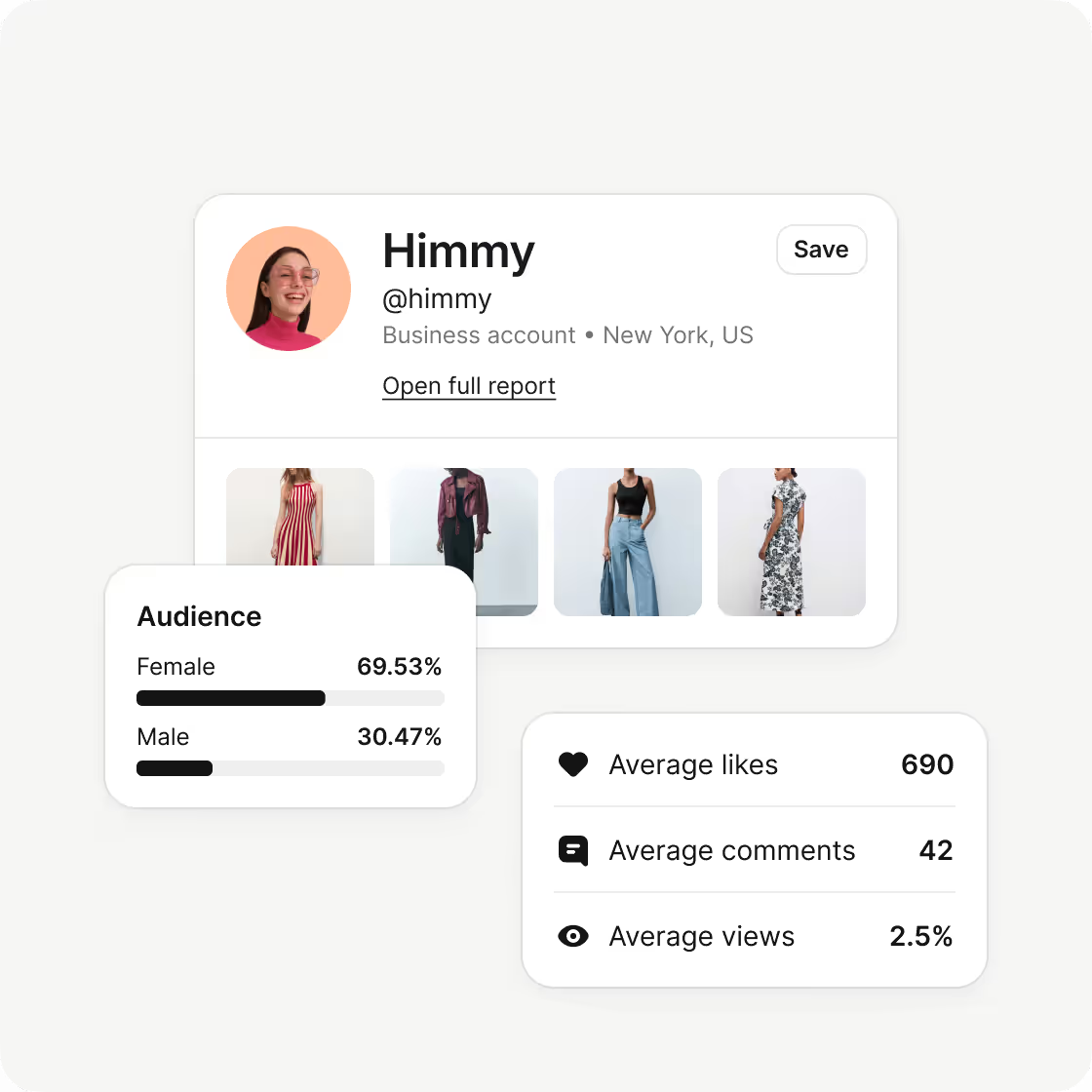
Finding creators is only half the battle, though. The next step is evaluating them, especially for brand fit.
Marketers have too many criteria for brand-fit influencers
Over 44% of marketers feel they’re spending too much time finding the right influencers.

How much time is too much time? Most influencers in our survey spend 5–15 minutes evaluating a single creator’s profile. Abudullah Khan shares why it’s time-consuming to search for the best creators:
🟧I spend too much time looking for influencers, especially when the brand requires a very specific type of creator. While the process is important for finding the right fit, it can be time-consuming when there’s a long list to go through or limited quality options in the niche.
How long it will take you to evaluate an influencer depends on various factors, including:
- Niche: It might take longer to find relevant creators for hyper-specific niches.
- Industry familiarity: If you’ve already done a few collaborations in your niche/industry, you already know what to look for and which creators to weed out. If you’re looking for influencers in a new industry, however, it might take some time to learn the ropes.
- Campaign requirements: If you require a specific type of content, or creators with certain credentials, it will take longer to find them.
- Social media platform: Short-form content, like that of Instagram and TikTok, will take less time to examine than long-form content, like YouTube videos.
- Brand restrictions: If you’re working in highly regulated fields (such as medicine or law), then you also need to spend time conducting background checks and ensuring the authenticity of the creator.
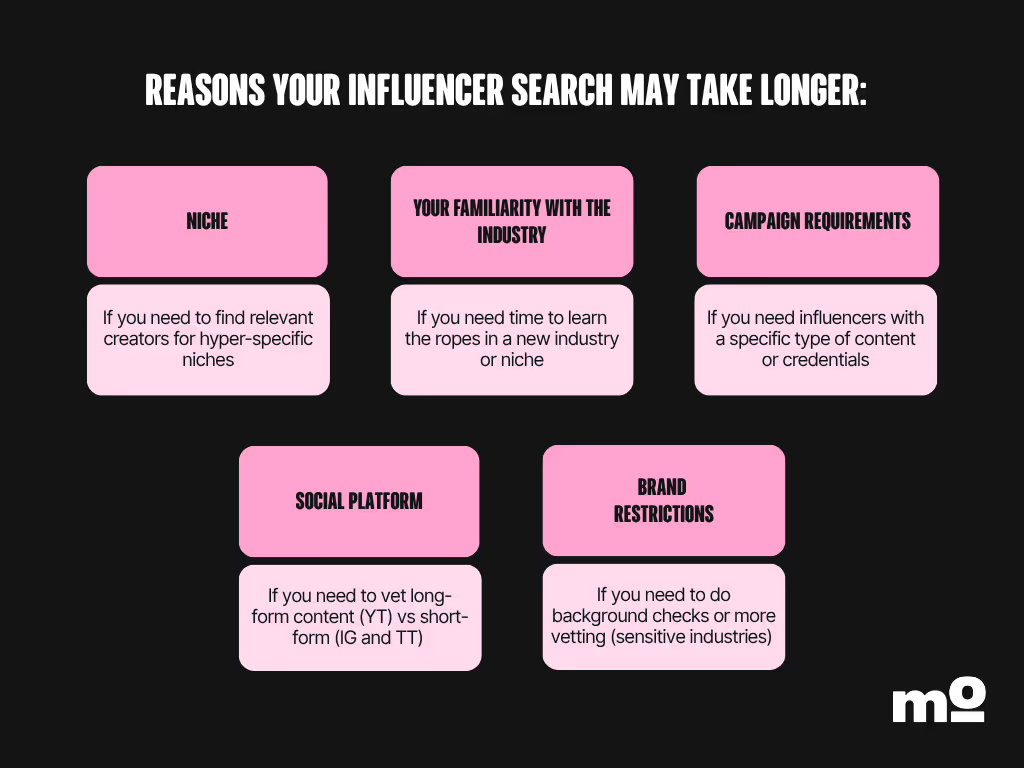
While all of the above contribute to a long discovery process, another factor is that marketers – despite being well-intentioned – often apply overly strict criteria in search of the “perfect influencer.” According to our survey, here’s what marketers prioritize when assessing brand fit:
The influencer…
- has the right audience demographics
- creates content that aligns with the brand’s values
- has an aesthetic that matches the brand’s
- is in the same niche or industry
- talks about the problem that the brand’s product solves
- already uses or loves the brand’s product

Apart from these, marketers also consider:
- a creator’s storytelling skills
- the frequency of their collaborations with competitors
- the authenticity of their engagement
- whether they respond to comments
- their energy
- their selling capabilities
- and many other factors.
None of these criteria is meaningless, but when each one becomes non-negotiable, you significantly shrink your pool of potential influencer partners.
Given how particular the selection process has become, it’s no surprise that over 87% of marketers in our survey said finding the right-fit influencer is getting harder.
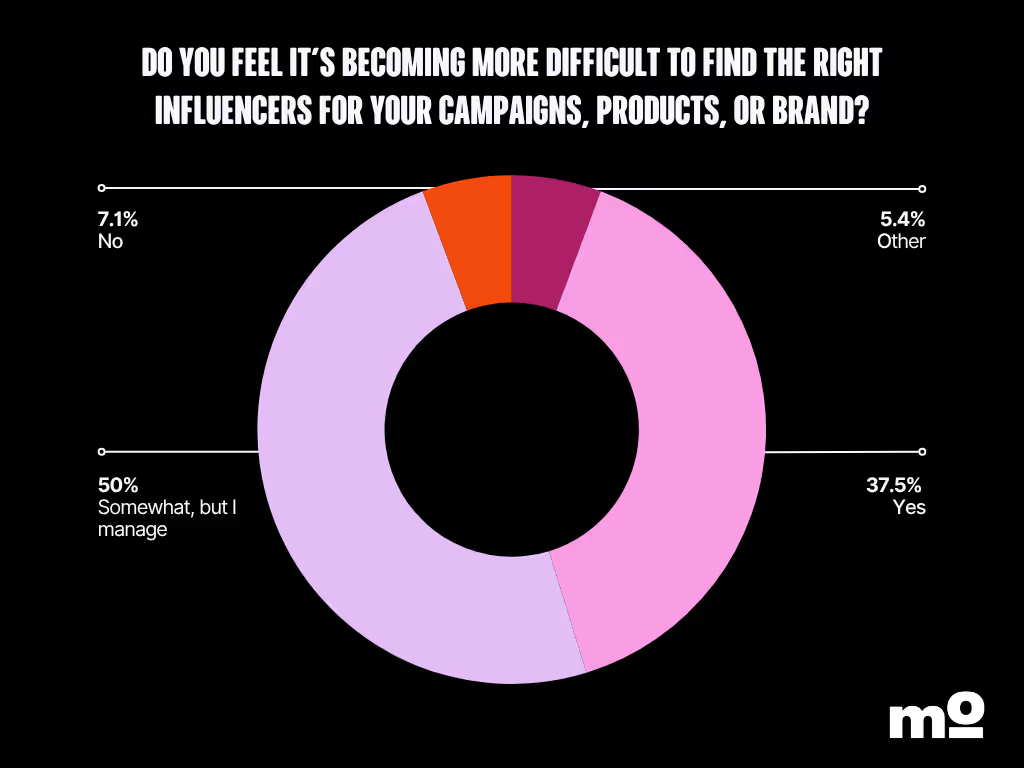
But selectiveness isn’t the only reason influencer discovery is getting tougher. Next, we’ll explore the top challenges marketers face when searching for creators – along with practical solutions.
The top 6 challenges marketers face in influencer search (with solutions)
Our survey revealed a list of the top challenges marketers are facing today in finding new influencers.

Let’s dive deep into how to solve each challenge one by one.
1: Low-quality creators
As far as creators go, low-quality could mean two things:
- They have an inflated engagement rate, fake followers, or spammy content.
- They don’t share posts that meet your brand standards.
Inflated metrics and spammy content
Truth time: creators commonly buy followers and engagement to show more positive metrics on their profiles because they are paid at least somewhat on the basis of their audience size and engagement rate.
There’s an easy solution for this: filters on Modash. For example, you can:
- use the Fake Followers filter to find influencers who have a bot following of less than 25%
- use the Last Post filter to find creators who post frequently
- use the Verified feature to only see creators who have the blue tick
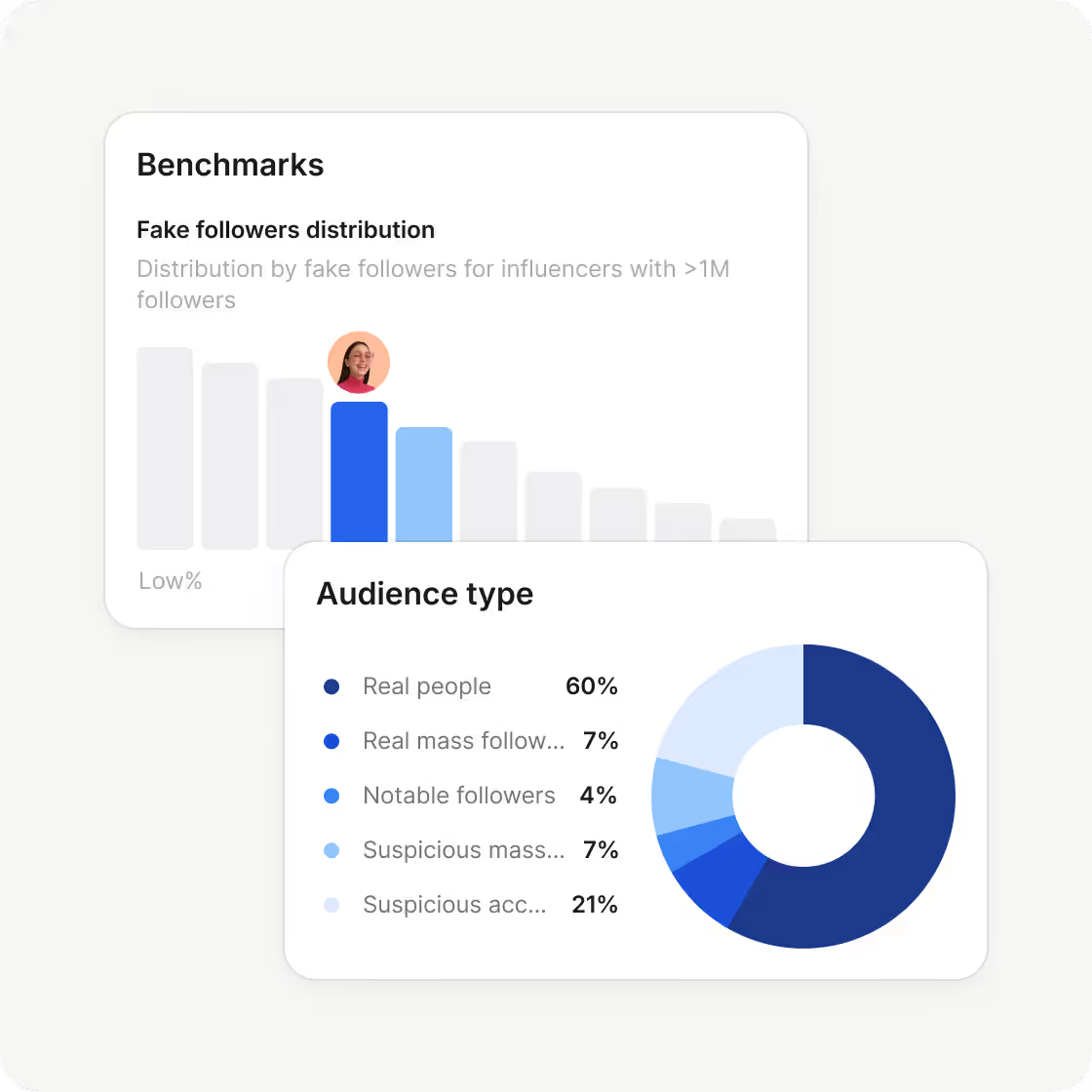
A little disclaimer: having fake followers doesn’t necessarily mean a creator bought them. Often, these are bot accounts that start following and interacting with the creator. A small percentage of fake followers isn't a red flag.
Modash gives you additional insight so you can assess whether a creator’s content is low quality:
- A healthy follower growth rate usually indicates that an influencer is reaching more people and growing consistently.
- Use benchmarks to understand whether or not a creator’s engagement rate and fake followers are less than, equal to, or greater than the industry standard.
- View a creator’s likes month over month to check if their content continues to resonate with their audience.
Check it out for yourself: Try Modash at no cost for 14 days.
Content quality doesn’t meet brand standards
To check whether a creator’s posts are up to snuff, there’s no shortcut: you have to manually view each influencer’s profile. Alice Arruda expresses what this problem looks like in action:
🟧Most of our products at Hoomy are high-ticket, and at times, it can be challenging to find creators who check all our boxes – brand fit, aesthetic fit, and audience fit.
That said, it might be worth checking if your brand standards are too stringent or if you can be a little more flexible. I say this because an overwhelming majority of marketers in our survey felt they missed out on interesting collaborations because an influencer didn’t meet their criteria.
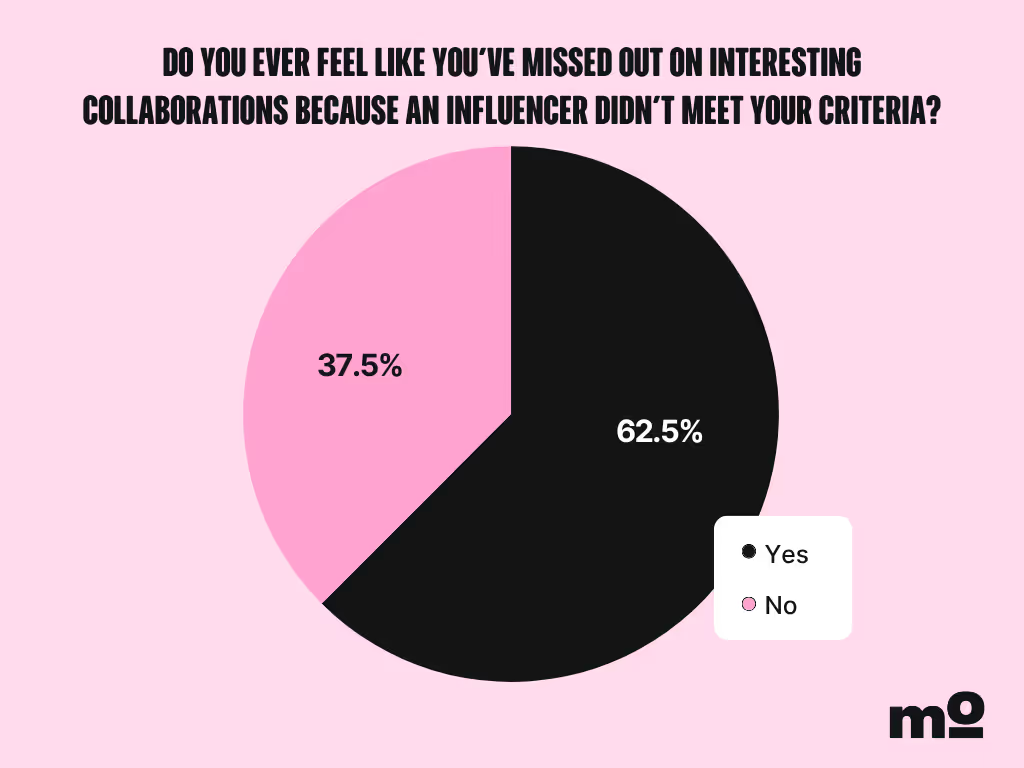
Maybe a creator’s content seems too casual – which you call “poor quality” – but it might be exactly what a potential customer perceives as authentic.
And get this: 73% of marketers in our survey said they’ve worked with a creator who exceeded expectations despite being a mismatch on paper.
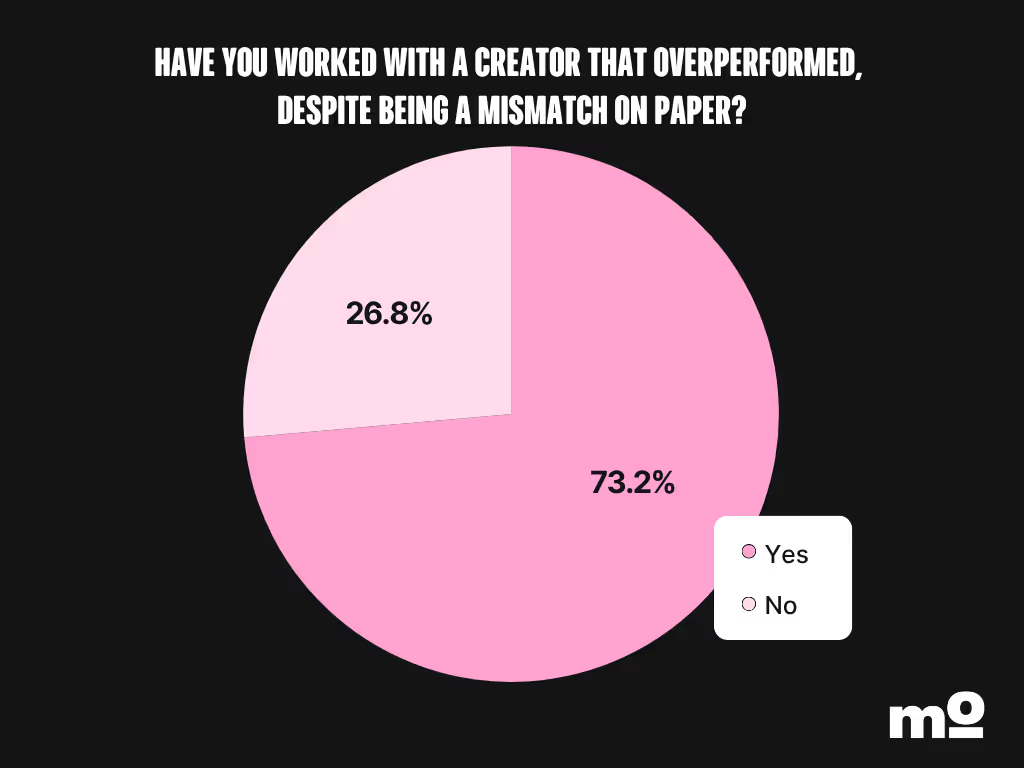
Alice herself experienced this firsthand:
🟧This specific creator didn’t have much fit with us – she was much younger than our ideal persona, and her content and profile didn’t scream luxury (which is one of the key words we use to brand Hoomy). But her audience was highly engaged, and clearly trusted her opinion and the products she promoted.
If you’re holding back on partnering with a creator solely because you think their content isn’t up to standards, but you can see other green flags – like an engaged community – it’s worth taking the leap. It might be uncomfortable to partner with a creator who isn’t a perfect fit (and it might be challenging to convince stakeholders), but the results might be 100% worth it.
2: Shortlisted influencers are out of budget or not open to your preferred collaboration
Our survey found that influencers are less open to bartering than they once were and are expecting higher and higher compensation. Cheyanne Pettyjohn explains:
🟧It's become a little harder to justify a flat-rate partnership. If you don't have an excess budget to throw at partnerships, it's hard to go to leadership with a collab idea that would get a lot of eyes on the brand but next to no conversions. This type of partnership is hard on ROI, but it seems to be the only kind a lot of creators want.
There are four possible solutions to this problem:
- Send influencers gifts with no strings attached. Instead of proposing a barter deal, gift influencers your product with no obligations. If they like your product, they might post about you at no cost. If they don’t, they can provide valuable feedback! Gifting can also get your foot in the door for future collaborations. If you’re looking for some inspiration, check out these influencer gifting examples.
- Negotiate a hybrid deal. Don’t remove a flat fee from your pay structure entirely – influencers need that to maintain stability in their business. Instead, propose a hybrid deal with a lower flat fee and a higher percentage of performance-based incentives (such as 10% of every sale they bring in). This way, influencers receive a flat fee and have the opportunity to earn more by selling your products. Read our complete guide to negotiating with influencers.
- Track your brand awareness impact. There are various ways to measure the ROI of brand awareness campaigns – like website visits, engagement, shares, and reach. Use these metrics to demonstrate the value of your campaigns to stakeholders. A solid influencer marketing report can go a long way in stretching your budget.
- Find storyfit influencers (outside your immediate niche). When influencers are out of budget, it’s usually because they’re extremely popular in their niche. For example, if you’re a skincare brand partnering exclusively with skincare influencers, they will be in high demand from competing brands. However, a travel creator looking for skincare products that they can carry around worldwide might make for a fresh take and be within budget. Venture outside your niche to find creators who have storyfit, even if they don’t have a direct product fit.
Among all these solutions, searching for storyfit influencers might be the best way to find new faces and use your budget wisely. The best part? It’ll also solve the problem that Miroslava Petkova describes:
🟧Influencer content gets repetitive. Even though it’s made by a different person each time, somehow it all starts to look the same, so it becomes harder to find influencers who can create unique, authentic content.
True, it’s hard to get unique influencer content when you’re partnering with creators in the same niche over and over again. Creators in adjacent niches often have an authentic and new perspective on your products. As Anna puts it:
🟧Sometimes, influencers who are not 100% in the brand aesthetic are still more natural and relatable.
How do you find these storyfit influencers?
- Tap into category entry points (CEPs): moments when your product is relevant and timely – even if the creator is miles away from your industry. For example, a moving company collaborating with a wellness influencer who is planning to move to a new house.
- Find creators who inspire your target audience: that is, influencers whom your potential customers look up to. They might not be in your niche, but they represent your audience’s aspirational lifestyle, goals, and values. For example, an environmentally friendly fashion company partnering with an influencer who makes content about everyday sustainability.
- Search for influencers who have unique content formats: creators who are just ✨ memorable ✨ because of their style – whether that’s humor, character, energy, or something else.
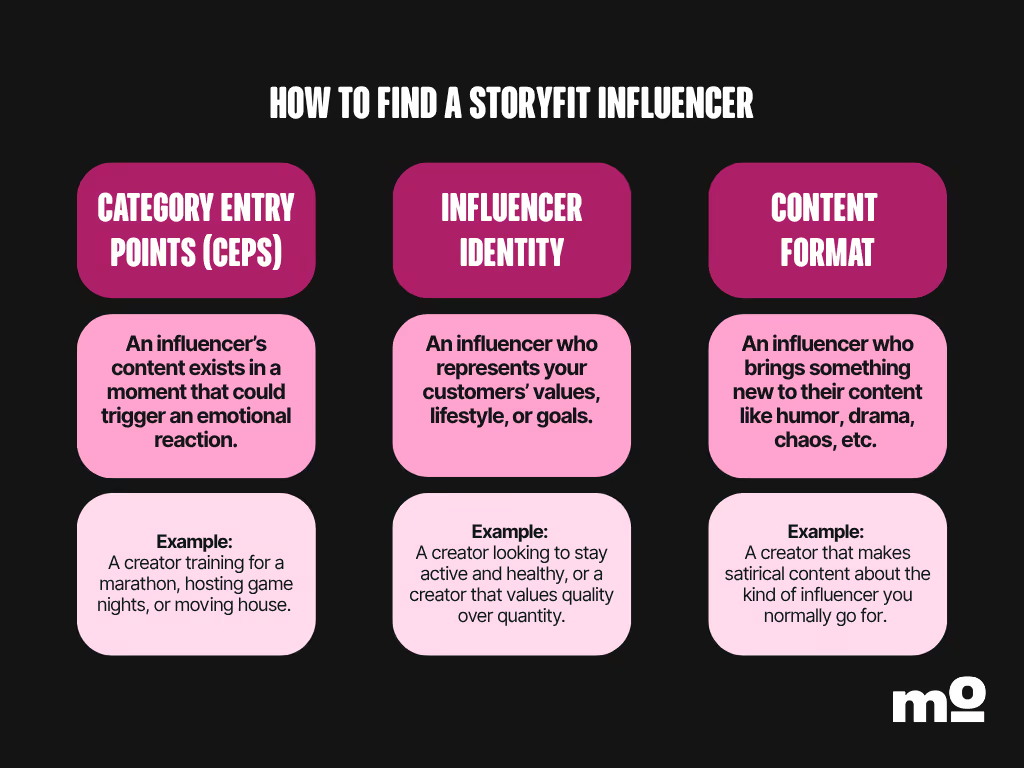
Here’s my favorite example of a storyfit collaboration that uses the unique content format type: the partnership between airup (a water bottle) and filmmaker Bibi-Jane Angelica. On the surface, a water bottle brand and a filmmaker have no business collaborating. But when they do? The post they build is creative and unlike any other partnership airup has done. And it’s not just me – see the comments for yourself:

3: Lack of time/resources for proper vetting
No doubt about it: shortlisting influencer profiles and evaluating the content of each is time-consuming. Athira Aravind knows how hard it is:
🟧One major challenge is finding good-quality creators. It requires a lot of manual work to vet each creator, post by post.
It’s worth noting that 50% of marketers in our survey stated their process for finding influencers, while effective, could still be improved.

Usually, all you need to improve your processes are systems, whether in your workflows, tools, or automation.
One of the easiest ways to reduce the time spent vetting influencer profiles is to use an influencer analysis software like Modash. You can apply various filters and get a list of creators who meet your criteria 100% – saving you hours! Instead of going back and forth with creators about their audience demographics and paid post performance, you spend that time negotiating and kickstarting the collaboration.
In Modash, you can even save your most-used filters so you don’t have to select them each time you want to search for the same kind of creators.
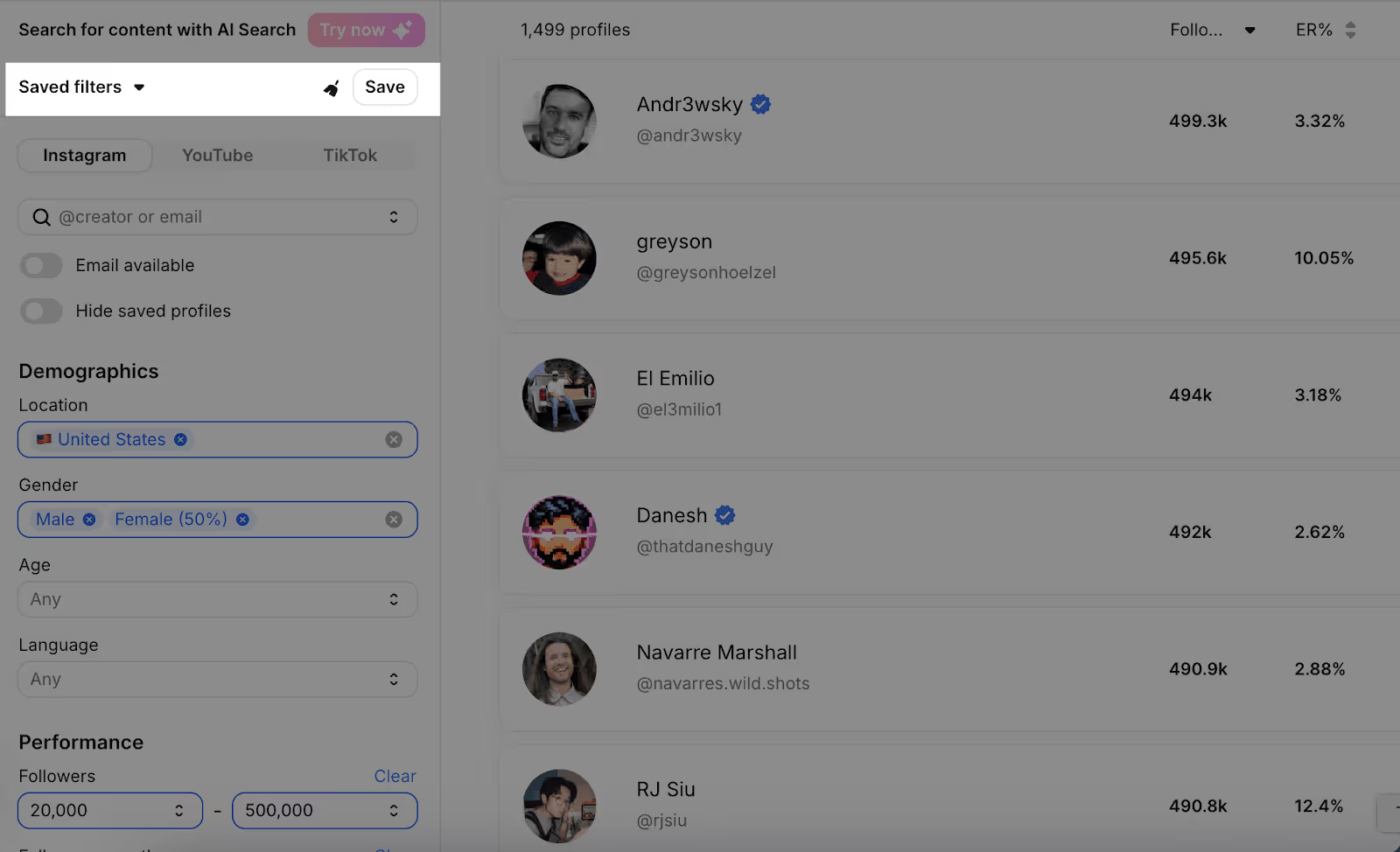
You can even use Modash’s AI search to describe the kind of content you’re looking for – and find creators who make exactly those kinds of posts. For example, I searched for “person discussing glass skin” and layered in filters like follower count, location, and engagement to find 99 influencers who matched all of those criteria.

If you can afford to, it might also be worth hiring an agency or a freelancer to help you speed up the influencer vetting process.
Remember: The goal is not to eliminate or rush the influencer evaluation process; it’s to make the best use of your time. The hours you spend examining profiles help you find the right creators and build a solid foundation for successful collaborations.
4: Not enough creators to make content about your product
If you’re in a niche category, it might be hard to find creators who talk exclusively about your industry. Leslie Belen shares an example:
🟧For niche audiences like healthcare professionals, the pool is smaller, and many aren't active on influencer platforms or don’t self-identify as influencers, so you have to get creative in how you find them.
At Modash, we use the term “lamp influencers” to describe this concept. For example, if you’re in the lamp business, you need creators who specifically talk about, review, and recommend lamps… but influencers that niche are rare.
The solutions to this challenge are those we’ve already discussed:
- Use Modash’s AI search to find creators talking about your very niche niche.
- Find storyfit influencers.
Additionally, consider that your definition of the ideal creator might be too restrictive, holding you back from serendipitous collaborations. For example, Athira found that creators outside her ideal demographics gave the best ROI in one of her campaigns:
🟧We usually don't work with Gen Z creators. However, we worked with one recently, and the campaign did so well because of her! The CPV and ROI were some of the best.
Here’s another example from Nacho Selma, who saw great results after taking a chance on an influencer younger than the kind his company typically works with:
🟧I thought there was no way an influencer could sell shapewear for older women, but it was the product she chose – and honestly, she ended up being one of the top performers in that campaign, which had several different products. It worked way better than I ever imagined!
In our survey, a majority of marketers said they’re open to experimenting with unconventional creators:
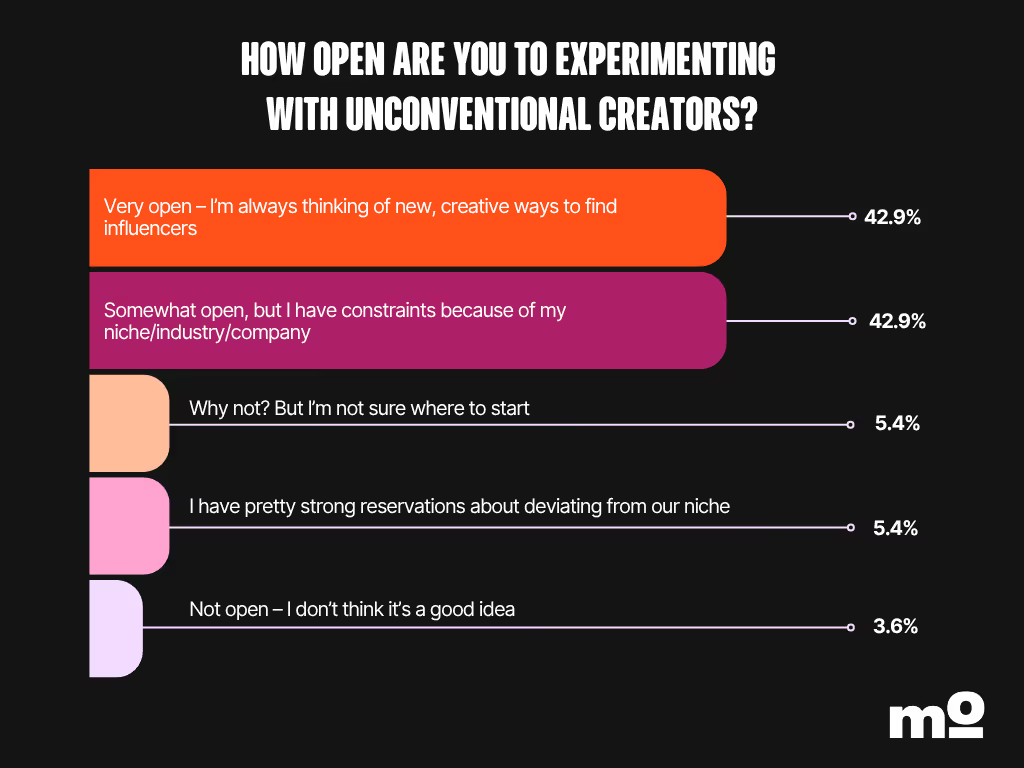
And yet, just over 48% of marketers test new creators only when the budget permits. The ideal approach is to set aside a chunk of your budget to experiment with new kinds of influencers, the ones who veer a little outside the lines you’ve set. Influencer marketing is a creative industry – you’ve got to stretch the edges to find the gold.
Here’s an example of an unconventional collaboration between writer Baron Ryan and Yahoo that made me actually consider getting a Yahoo email account.

5: Almost all influencers are working with competitors or under exclusivity
This is the opposite of the problem we discussed above: if you’re promoting a product in an influencer-favorite industry – such as skincare, fashion, or travel – you might have trouble finding creators who aren’t already snatched up by your competitors.
The solution? I hate to sound like a broken record, but its (drumroll 🥁) storyfit influencers. Fiorella Picado says focusing solely on what your ideal creator looks like can hold you back:
🟧[The biggest mistake marketers make during influencer discovery is] focusing purely on the influencer as a brand fit instead of audience fit. Don’t limit yourself to the industry where the product belongs. Instead, think about which niches and other industries are good fits for the product.
Take this example of a skincare brand, Esmi, collaborating with a mom influencer, Winona.
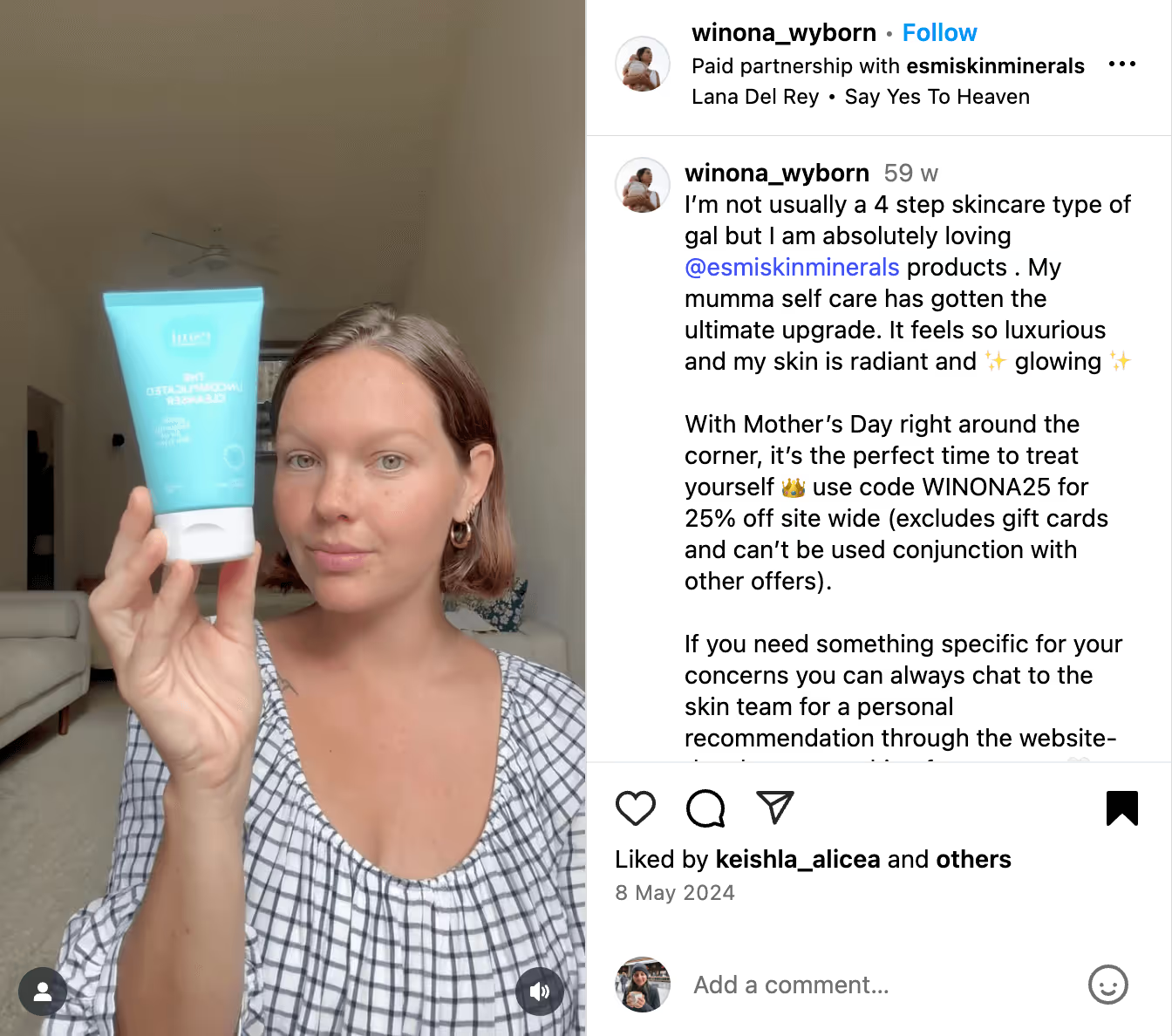
Instead of partnering with skincare creators who already have a ton of competing skincare products on their page, Esmi partnered with a mom who not only had a fresh angle but also a unique and personal story.
Abdullah had a similar experience, surpassing expectations when partnering with a creator outside his usual niche:
🟧We worked with a creator who didn’t seem like the right fit at first – their niche was different, and their style didn’t fully match our brand. But they surprised us. Their audience was very engaged, and they explained our product in a clear, relatable way. They also added a personal story that made the content more meaningful.
Ask not “Who’d be the perfect influencer for my brand?” but rather “Who can tell a better story about our products?”
6: Exhausted the influencer pool
Over 51% of marketers in our survey said they often feel like they’ve run out of relevant creators to work with.

Objectively, many niche categories don’t have a large number of influencers. And even in popular industries, the best influencers are already working with competitors (sometimes with exclusivity) or are too costly.
But sometimes, your influencer search criteria might be too strict – you may be searching for a unicorn influencer that matches all your non-negotiables, nice-to-haves, and the dream wishlist. Valerija Somi says it best:
🟧Focus on alignment, not perfection. There’s no such thing as a “perfect” influencer – but there is the right fit for your brand. Look for creators whose audience overlaps with your target customer and who already talks about similar topics. Check their comments – do followers trust them? That’s more valuable than a flawless feed or huge numbers.
Take the case of Matheus Ribeiro. He was looking for influencers for a crypto company, and about after 300 collaborations, his challenge was finding new niche influencers:
🟧We have already done more than 300 partnerships, so at the moment, the challenge is finding new niche influencers that make sense for the brand. One alternative we found was to look for bigger creators that require a bigger budget.
He got flexible with his other criteria – except basic audience demographics – and found that he could expand his influencer pool:
🟧With crypto, everyone is a potential consumer because at the end of the day, we are talking about investments. And one niche that surprised us was the auto industry. In a way, this audience matches our criteria, like gender and age.
But how do you even spark creative ideas for storyfit influencers? Fernanda Marques recommends stepping into your audience’s shoes:
🟧Instead of hunting for influencers based on metrics alone, step into the world of your audience. If you’re marketing anime products, hang out in anime spaces. If it’s food, scroll foodie TikTok. Get to know how your ideal customers talk, joke, share, and consume. The “perfect fit” isn’t always the biggest name – it’s the creator who would already be excited to use your product with or without a brief.
When you empathize with your audience research, you’ll find it easy to think of new categories, understand who your customers identify with, and know which fresh formats will resonate with them.
Influencer search has evolved. Have you?
Our survey findings make one thing crystal clear: influencer discovery doesn’t look the same as it did in 2018. If it feels harder to find relevant influencers for your brand, that’s because it is.
The creator economy is maturing, influencer saturation is real, and many top creators are either out of budget or already locked in with your competitors. But that doesn’t mean the pool is dry – it just means your discovery strategy needs to evolve.
✅ Instead of finding influencers who are directly connected to your industry, think broader and discover storyfit influencers. This will allow you to create more authentic influencer content that doesn’t get drowned and forgotten in a sea of sameness.
✅ You don’t need to sacrifice what “brand fit” looks like for you, but you do need to reassess it every so often. Don’t get restrictive about quality.
There are no shortcuts to great influencer partnerships, but you can take the smarter way there using Modash. Whether you’re looking to explore new niches, filter for audience quality, or simply stop wasting hours chasing media kits, Modash can help.
With filters that actually matter and a database that doesn’t run dry, you can spend less time searching and more time building relationships that move the needle.
Take Modash for a spin for 14 days – no strings (or credit card details) attached.

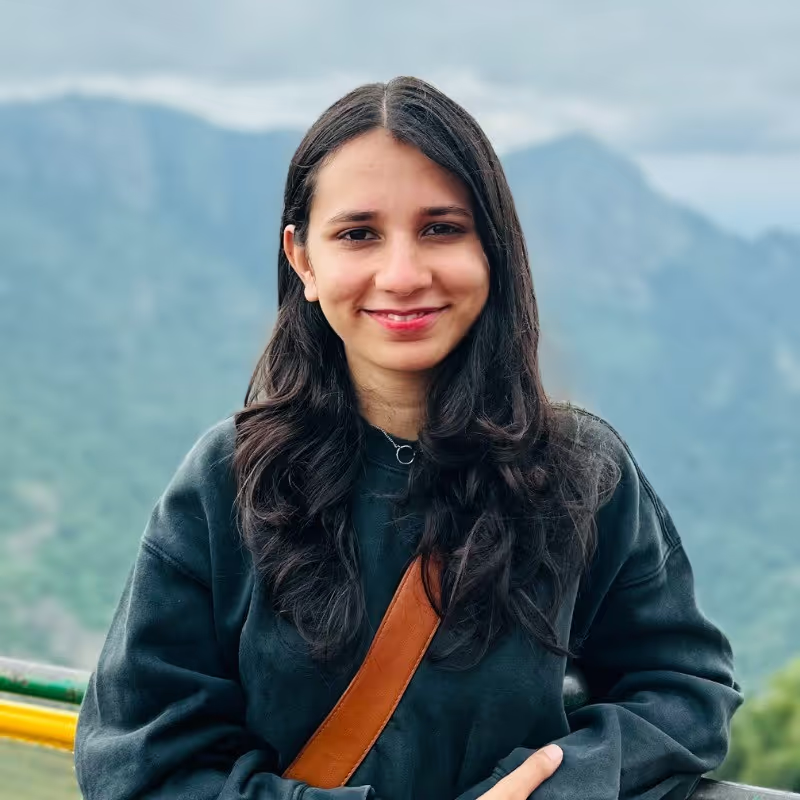
.avif)
